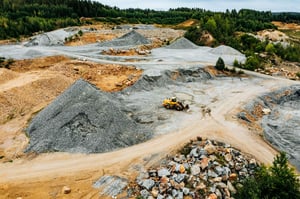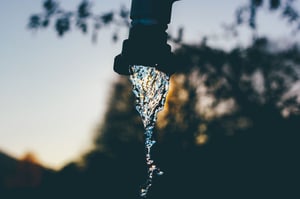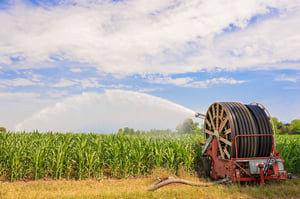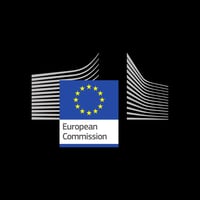
WATER FOOTPRINT ASSESSMENT
Ensure your business manages water sustainably with our expert Water Footprint Assessment. Our team of PhD-level scientists provide in-depth analysis of water use, efficiency, and environmental impact, helping you comply with ISO 14046 while reducing consumption and pollution. Let us help you safeguard water resources and enhance sustainability.



WHAT IS A WATER FOOTPRINT ASSESSMENT?
A water footprint assessment supports organisations in measuring, managing, and mitigating their water footprint, ensuring compliance with ISO 14046. Our Water Footprint Assessment service provides a comprehensive analysis of water use, consumption, and pollution, helping companies to address water scarcity and water pollution at both local and global levels.
One of the key areas of focus for these services is understanding the amount of water consumed by agricultural and industrial processes. These comprehensive assessments provide valuable insights by evaluating ground water consumption, wastewater disposal, and importantly, the water footprint of the process/organisation/service.
Mining, metals, and heavy industry rely heavily on water-intensive processes, assessing water use ensures sustainable withdrawals, preventing local water shortages.
Proactively manage water risks in water-scarce regions, ensuring business continuity and community support.
Demonstrate commitment to responsible water stewardship, a key concern for investors, customers, and regulators.
Differentiate from competitors by leading in water sustainability initiatives.
Water footprint assessments complement decarbonisation strategies, enabling a holistic sustainability approach.
Promote circular economy efforts by implementing closed-loop water systems and wastewater reduction initiatives.
MEASURE, MANAGE, AND MITIGATE YOUR WATER FOOTPRINT
HOW THE WATER FOOTPRINT ASSESSMENT WORKS
Our Water Footprint Assessment service provides businesses with a comprehensive understanding of their water use, efficiency, and impact on the environment. By analysing direct and indirect water consumption, improving process efficiency, and ensuring compliance with ISO 14046, we help organisations mitigate their water consumption and pollution.

Our key service functions include:
- Analysis
- Strategy
- Water Usage
FULL WATER FOOTPRINT ANALYSIS
We measure the total water footprint of a company, product, or process by assessing:
- Direct Water Use (Water that is used by your organisation/process/service): Water withdrawn and consumed during operations (e.g., manufacturing, cleaning, cooling).
- Indirect Water Use (Water that is used by other organisations): Water embedded in supply chains, energy production, and outsourced processes.
- Blue Water: Fresh water on the ground surface and in groundwater, in other words, the water in freshwater lakes, rivers and aquifers.
- Green Water: The precipitation (rainfall) on land that does not run off or recharge the groundwater but is stored in the soil or temporarily stays on top of the soil or vegetation. Eventually, this water from precipitation evaporates or transpires through plants.
- Grey Water: Water that has been previously used may contain impurities from industrial or domestic use. It can be drained into flowing water sources or sent to wastewater treatment plants to produce freshwater.
WATER PROCESS EFFICIENCY & REDUCTION STRATEGIES
We identify opportunities to mitigate water usage, consumption, and withdrawal and as well as minimise wastewater (water pollution) through:
- Process Optimisation: Detecting inefficiencies in operations to reduce unnecessary water consumption.
- Water Recycling & Reuse: Evaluating the potential for closed-loop water systems, enabling businesses to reuse treated water.
- Leak Detection & Prevention: Assessing infrastructure for water losses due to leaks, evaporation, or inefficiencies.
- Equipment & Technology Upgrades: Recommending water-efficient machinery, fixtures, and smart metering solutions.
- Water Catchment e,g, rainwater collection systems
WATER USAGE ANALYSIS
We provide a water usage analysis to:
- Quantify and analyse water consumption and water withdrawal drivers.
- Provide detailed insights into water usage volumes, helping businesses understand their impact on water resources.
- Particularly necessary for operations in water-scarce regions so that significant water withdrawals are not occurring, and water scarcity is mitigated.

Of the world's land-based critical mineral mines, deposits and districts are located in areas already facing high or extremely high levels of water stress.

is the amount of global water demand expected to increase by 2050, driven by industry, population growth and climate change.

of global freshwater is consumed by agriculture, but 60% is wasted due to leaks, inefficient irrigation and unsuitable crops.
WATER FRAMEWORKS AND REGULTAIONS
Our service aligns with the ISO 14046:2014 standard, which provides a structured methodology for assessing water footprints. We help businesses:
- Ensure Regulatory Compliance: Adhere to ISO 14046, EU Water Framework Directive, and other global water management frameworks.
- Standardise Water Footprint Reporting: Provide consistent, comparable, and transparent data to stakeholders.
- Support Corporate ESG & CSRD Reporting: Assist businesses in integrating water footprint data into ESG and sustainability disclosures. Our water assessment aligns with the water use part of E3 of CSRD – Water and Marine Resources.



MEASURE, MANAGE, AND MITIGATE YOUR WATER FOOTPRINT
WHY CHOOSE TUNLEY?
We combine scientific expertise, regulatory knowledge, and practical solutions to help businesses effectively measure, manage, and reduce their water footprint. Here’s why organisations trust us for their water footprint assessment needs:
We don’t believe in one-size-fits-all. Whether you're in manufacturing, food production, or technology, we provide customised water management strategies that align with your industry’s challenges and goals.
We ensure your business stays ahead of UK and US water regulations, helping you meet legal requirements and streamline reporting for ESG, and CSRD frameworks.
We assess direct and indirect water use, identifying opportunities to improve water process efficiency, reduce waste, and mitigate water consumption.
Our recommendations go beyond assessment reports. We help implement actionable strategies, ensuring ongoing improvements and cost savings.
As a leading sustainability consultancy, we’ve worked with organisations across multiple sectors, helping them reduce their environmental impact while maintaining operational efficiency.
UNDERTAKING THE ASSESSMENT
The optimal time for a customer to complete a Water Footprint Assessment is at the earliest feasible stage. Water withdrawals are not clearly visible and do not present immediate danger. However, through extended water withdrawal beyond the natural recharge rate in a catchment the water availability shall diminish. If executed without mitigation measures this causes local water scarcity affecting public health, environmental stability and economic stability. Once an area has had all the water removed it is not viable for businesses, people, or nature. Or to put it simply, we all need water. By assessing water use, consumption, withdrawal, and pollution early any net withdrawals from the catchment can be mitigated against to prevent local water scarcity and pollution.



